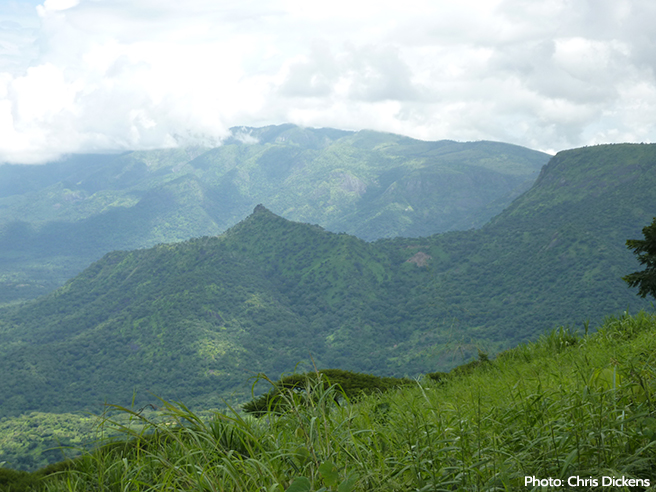From Conflict to Conservation

The Great Barrier Reef. Yellowstone. The Serengeti. World Heritage Sites are often household names, symbolic of the greatest wonders on Earth.
For host countries, designation of a World Heritage Site within its borders brings with it not only caché, but also a number of more practical benefits, such as financial assistance, technical support and training from the World Heritage Committee. It raises awareness about the importance of heritage preservation, and, by drawing the world’s attention, strengthens a country’s tourism potential.
So it’s perhaps not surprising that the government of South Sudan is currently working on ratifying the 1972 World Heritage Convention, after which it can begin proposing a number of its own areas for future World Heritage designation. In 2014, at the behest of the World Heritage Committee, AWF identified and drew up a tentative list of sites for such a proposal.
“There’s a strong desire on the part of the Ministry of Wildlife Conservation and Tourism to conserve South Sudan’s natural resources. As Africa’s youngest country and one challenged by conflict, South Sudan needs support to develop in a way that benefits its people while maintaining its natural heritage,” explains Kathleen Fitzgerald, vice president for conservation strategy at AWF.
1st management plan
At a workshop in November, AWF presented a tentative list of sites with World Heritage potential to the ministry and other key stakeholders. Believed to meet the UN Educational, Scientific and Cultural Organisation’s (or UNESCO’s) natural selection criteria, the suggested sites include Nimule National Park, the only park in South Sudan where elephants can easily be seen; the Imatong Mountains, the country’s only Afromontane habitat; Boma and Badingilo National Parks, which see the annual migration of the white-eared kob, the second-largest land migration in Africa; and others.
AWF is already providing conservation assistance to the South Sudanese government in two of these sites. One of the biggest accomplishments to date is the development of a general management plan for Nimule—the first-ever general management plan signed in South Sudan.
Though many would greet that news with a yawn, a general management plan provides tremendous value, as it guides zoning for natural resource use and revenue generation opportunities for the protected area. It also establishes a decision-making framework and ensures the area is responsibly managed in a way that meets conservation and other objectives.
Without such a plan in place, picturesque Nimule could well succumb to poaching, human encroachment and other looming threats, and endanger its chances of becoming a future World Heritage Site before it can be considered.
Instilling knowledge
For a culture of conservation to fully develop, however, the knowledge must also be there.
According to Fitzgerald, many of the senior staff at the Ministry of Wildlife Conservation and Tourism have biology and ecology degrees and practical field backgrounds. At the ranger level, however, conservation experience is virtually nonexistent—most rangers are ex-soldiers.
To that end, AWF is providing ranger training and implementing other conservation activities in the Imatong Mountains, which are a significant watershed for the southern part of the country. They are also part of the Kidepo Valley ecosystem, which includes Uganda’s Kidepo Valley National Park, where AWF has been working for the past few years.
“The Imatongs are representative of many of South Sudan’s natural sites: They are both beautiful and ecologically significant. If these ecosystems are properly managed, they will provide tremendous ecological and economic value to the country,” says Fitzgerald.
